| |
|
|
|
Beautiful living rooms in natural homes
around the world, part: |
 |
 |
 |
|
|
|
|
|
|
|
|
|
|
|
|
|
The living room is where people go to relax, sit,
stretch out, read and socialise. It's often the centre piece of
the house. A place that tells your visitors who you are, your
style and taste. It's a place where people often display 'things
from their life', one of the design patterns,
No. 253. It's a place that must cater for all sorts of
different people's shapes and sizes which should be reflected in the
seats on offer; Alexander's design pattern No.251.
|
|
|
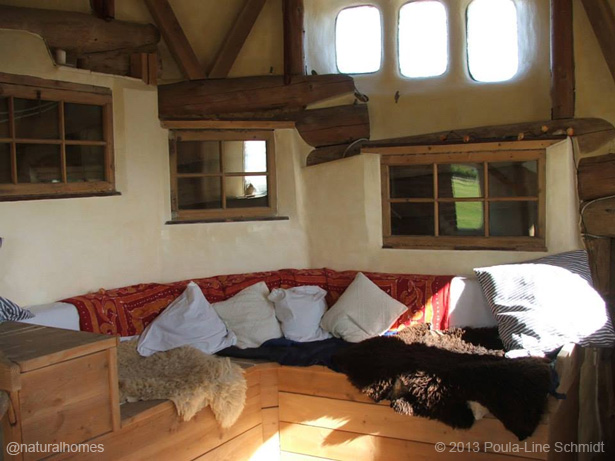 |
|
| |
|
|
|
|
|
|
Many of these living rooms have seats built in to
the structure of the building but also have occasional chairs to
add variety to the room. A living room looks at its most homely
if, as
Christopher Alexander recommends you, "never furnish any place
with chairs that are identically the same. Choose a variety of
different chairs, some big, some small, some softer than others...
some old, some new".
Poula-Line built her straw bale home (left and
above) in
Fri & Fro (Free and
Happy) ecoVillage in Egebjerg, Denmark. It's one of a collection of
unique straw bale homes in the village. Her home was inspired by a
conch shell she found on a beach in Malaysia. This is her living
room which sits beneath the spiral of the roof with light
streaming in from every direction. Before Paula built this home
she built a
tiny straw bale house that she calls her Smurf House. |
|
|
|
|
|
|
| |
|
|
|
|
This is the bed-living room of a wattle and daub oak framed
gatehouse that has stood the test of time for over 500 years. The
gatehouse was built in around 1467 in Bolton Percy, England.
|
|
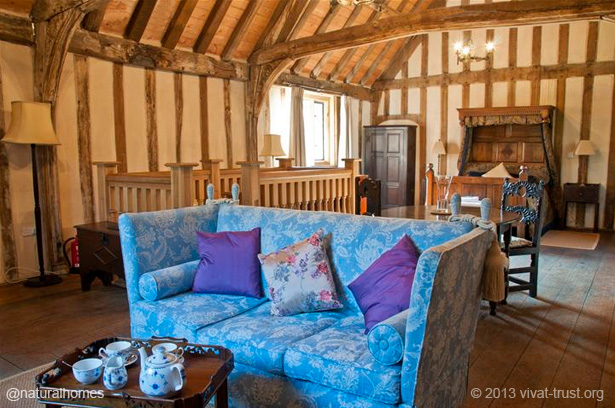 |
|
| |
|
|
|
|
It originally formed the entrance to a courtyard of
medieval buildings. The buildings, with the exception of the
gatehouse, were sadly demolished in the early 19th century. The
base of the gatehouse is limestone and sandstone with an oak frame
above and walls of wattle (lattice of hazel branches) and daub
(sand, clay and animal hair). Inside are some elaborate carvings.
Outside are plaques with finely-detailed carved green men. During
the 20th century the building deteriorated and was in danger of
being lost. Thankfully it was restored by the
Vivat Trust in 2009 and is now a holiday let. |
|
|
|
|
|
|
|
This stone house was built by Clark Sanders in East Meredith,
NY, USA. He began building it when he was 19 years old with stones
from tumble-down stone walls. Clark thinks of houses as sculptures
you can live in and has built eleven beautiful straw bale homes.
Notice the patterns in this picture; the circular door within the
thick walls [pattern No.197] with thickened edges pattern [No.225]
and the deep reveals pattern [No.223] in the windows that soften
the sunlight at the edges of the window. |
|
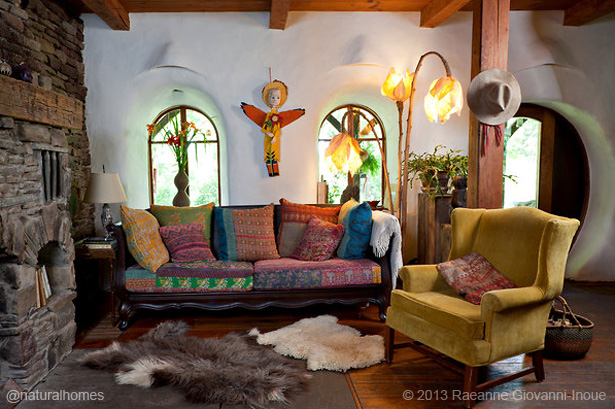 |
|
|
|
|
|
|
|
|
|
|
|
|
|
|
This home carries a whole fallen tree, including the root, forming
part of its wobbly roof. The rest of the home is made using sand,
clay, stone and roundwood which all came from the surrounding land
in Mayne Island, Canada. Light from the living room, which opens
up to the eave of the roof, fills the space with indoor sunlight
that draws you forward through a tapestry of dark and light. As
you walk forward to the living room, you'll pass the cob fireplace
on your right. The house is full of
design tips.
|
|
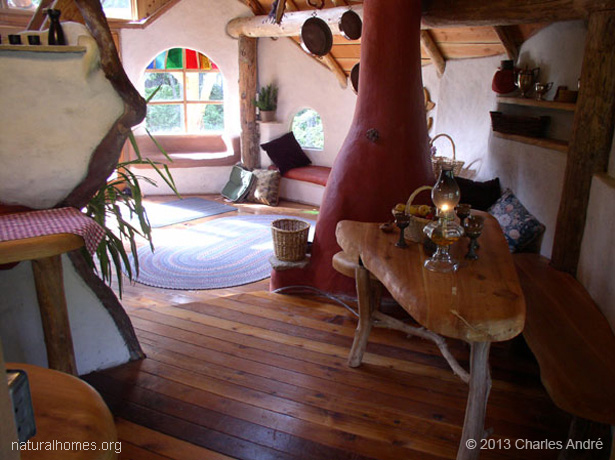 |
|
|
|
|
|
|
|
|
|
|
|
|
Simon Dale, photographer and fine artist built the iconic
Woodland
Home seen on so many websites as an example of a 'hobbit'
house. He now lives with his family in the Lammas ecoVillage in
Pembrokshire, Wales. The house was built by Simon and his father
in law with help from passers by and visiting friends. Four months
after starting the family moved in. The house took about 1,500 man
hours and cost £3,000 ($5,000) roughly £60/m2 ($9/sq.ft).
|
|
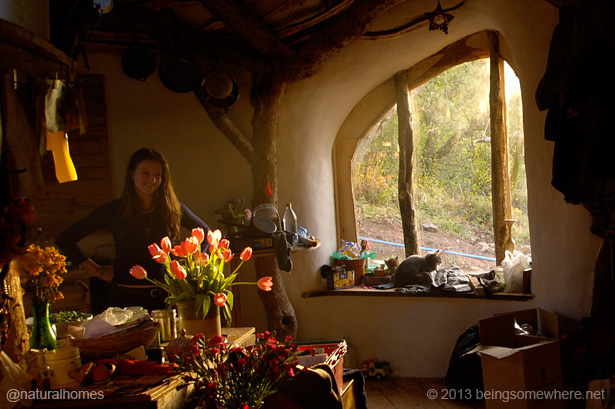 |
|
|
|
|
|
|
|
|
|
|
|
|
This is a house hidden away in a fairy chimneys. It's the living
room of a cave home in Ortahisar. It's one of the many villages
that occupy this labyrinth of caves in the Cappadocia region of
Turkey. The walls are very thick and
keep the house cool in summer, while the temperature outside is
more that
40°C (104°F), and warm in winter when it can be as low as -25°C
(-13°F).
|
|
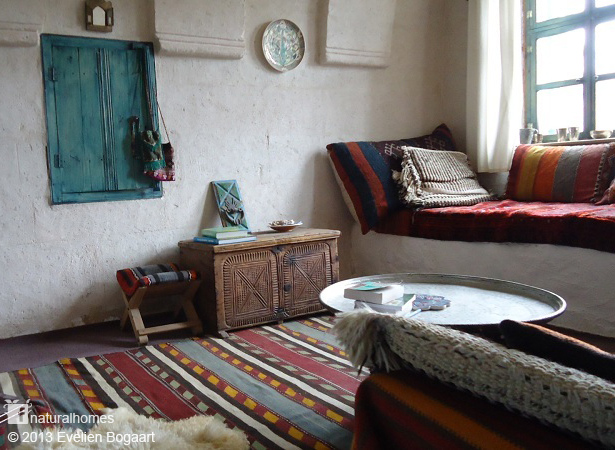 |
|
|
|
|
|
|
|
|
|
|
|
|